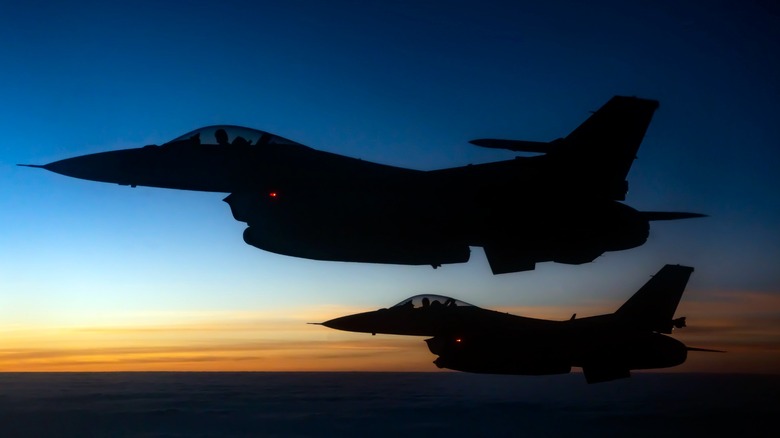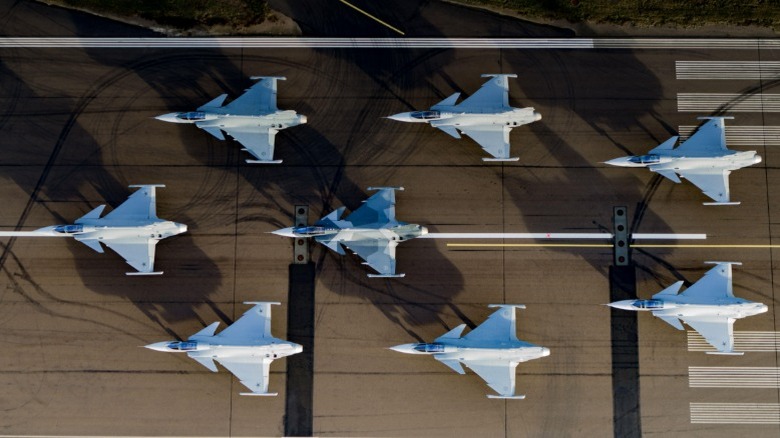 U.S. Air Force
U.S. Air Force
Every air force needs its own nimble, lightweight, single-engine fighter jet. For the United States, that's Lockheed Martin's F-16 Fighting Eagle, a fighter jet that's been around since 1979. For Sweden, it's SAAB's Jas 39 Gripen, a fighter that really puts the "multi" in multi-role. Just like every other military aircraft, there have been multiple variants for these two fighter jets, so for purposes of simplicity, we'll be looking at the newest version of each one: the F-16 Block 70/72 (sometimes referred to as the F-16V) and the Jas 39 Gripen E. It's easy from their appearances to see some of the differences in these two aircraft.
The Gripen might have a single engine like its American counterpart, but it has two air intakes on its sides whereas the Falcon has a single one under the cockpit. Most notable is the canards on each side of the Gripen's cockpit, as well as its cropped delta-wing design. Looking at their internals, you'd find the engine that powers SAAB's Gripen E is the General Electric F414-GE-39E turbofan engine, the same powerplant for Boeing's F/A-18 Super Hornet and E/A-18G Growler. It produces 22,000 pounds of thrust and gets into Mach 2 territory for speed when at altitude.
The F-16 engine, on the other hand, depends on the version. If it's the Block 70, it's sporting General Electric's F110-GE-129, while the Block 72 variant has Pratt & Whitney's F100-PW-229 turbofan engine. These engines can push out around 29,000 pounds of thrust and get the jet up to 1,500 mph (faster than Mach 2).
The two fighters vary slightly in payload capacity
 SAAB
SAAB
Reaching Mach 2 is beneficial for sure, but what really helps in a combat situation is a fighter's weight class. They might not get all the glory or make the headlines that larger fighter jets like the F-35 Lightning II or F-22 Raptor do, but they're crucial for their respective militaries. Part of what makes them crucial is their nimbleness, which partly comes from their lightweight design. The F-16 is slightly heavier at 20,300 pounds without any fuel or payload. Its Swedish counterpart, on the other hand, comes in at 17,600 pounds. For context, larger fighters like the F-22 can weigh around 40,000 pounds.
Naturally, a fighter jet's armament is instrumental in its success. When it comes to close-range combat, the F-16 sports an M61A1 20mm Vulcan rotary cannon, while the Gripen E has a 27 mm Mauser BK-27 cannon. Both the Gripen E and Block 70/72 F-16 have enough hardpoints to support a wide array of missiles — including beyond-visual-range ones — and bombs to fulfill the multiple roles for which they're designed.
The F-16 has 11 external hardpoints in all, one more than its Swedish counterpart. This gives the Falcon a slight advantage. Not only in terms of the number of weapons it can carry, but it also has a higher maximum takeoff weight — 48,000 pounds compared to the Gripen's little more than 36,000 pounds — allowing the F-16 to carry larger missiles and bombs, if necessary.



